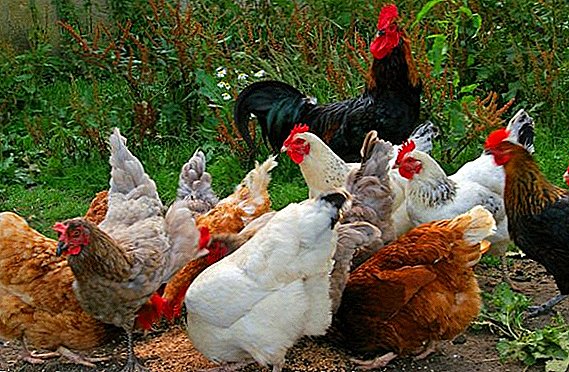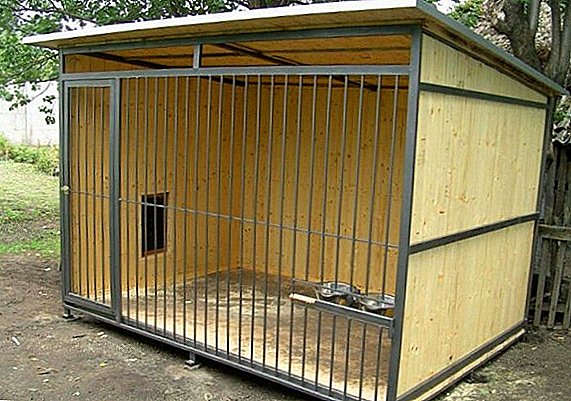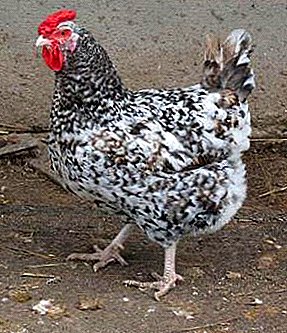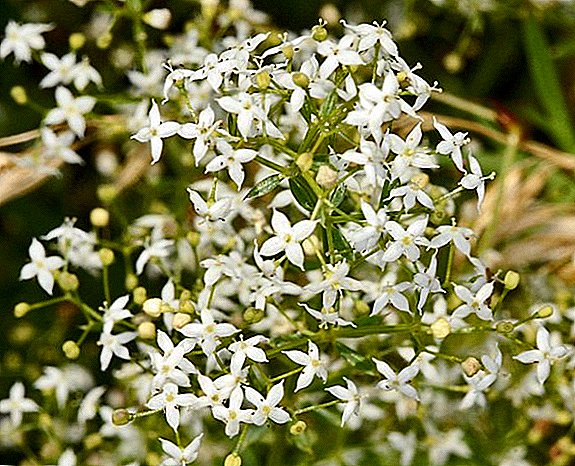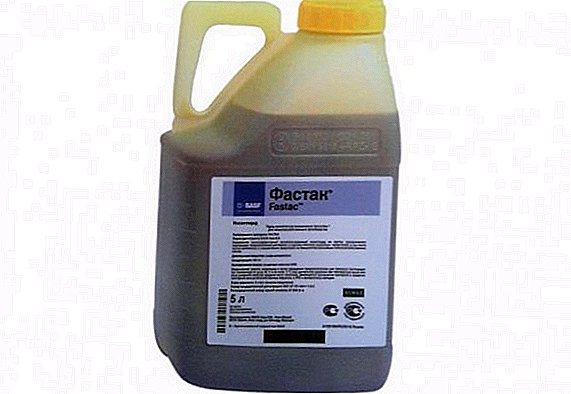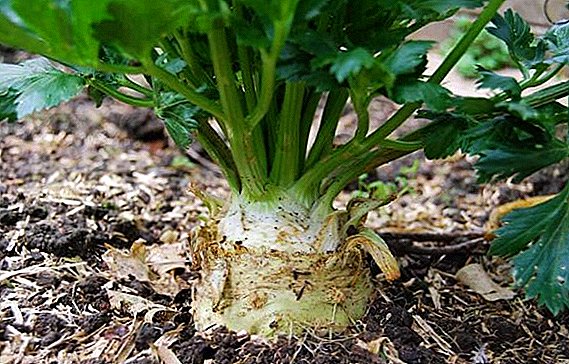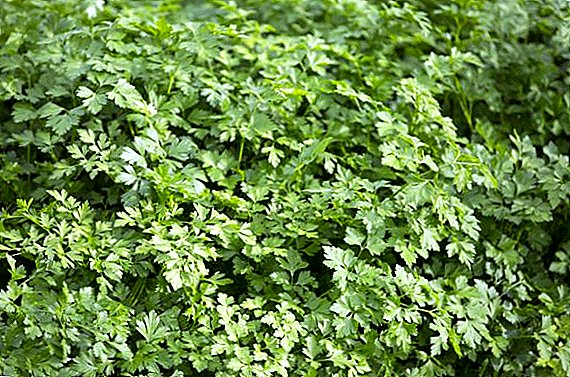 Parsley - a biennial plant of the Parsley genus from the Umbrella family with erect branched stem and shining, dark green, pinnate leaves. Contains ascorbic acid, vitamin B, retinol, riboflavin, iron, potassium, magnesium, pectin substances and phytoncides.
Parsley - a biennial plant of the Parsley genus from the Umbrella family with erect branched stem and shining, dark green, pinnate leaves. Contains ascorbic acid, vitamin B, retinol, riboflavin, iron, potassium, magnesium, pectin substances and phytoncides.
It is widely used in dry and fresh form for flavoring in cooking and at conservation, it is added to dishes from vegetables, meat, boiled fish, and game.
Did you know? Especially popular in ancient Rome. Pliny wrote that serving salads and sauces without parsley is a sign of bad taste, and also noted that all classes of people love her.
Why plant parsley in the fall
 Winter crops are much more resistant to low temperatures, frost and all sorts of diseases, and ripen much faster than normal ones. On average, planting parsley under the winter accelerates growth by several weeks or a month. However, it must be borne in mind that the vegetables thus obtained cannot be stored, but must be consumed immediately.
Winter crops are much more resistant to low temperatures, frost and all sorts of diseases, and ripen much faster than normal ones. On average, planting parsley under the winter accelerates growth by several weeks or a month. However, it must be borne in mind that the vegetables thus obtained cannot be stored, but must be consumed immediately.
Important! Parsley ordinary leaf is considered to be the most frost-resistant variety.
The best time to plant parsley before winter
Summer residents often wonder whether it is possible to sow parsley before winter, and receive an affirmative answer. You need to choose the time to prevent seed germination in the fall, just swelling, sow them as late as possible, usually in October or November.
Sowing parsley under the winter has a time before the first frost, when the earth is covered with a crust of ice, regular night temperatures are -2-3 ° C. A good option is to sow in frosty weather. If the weather stays warm until December, the landing dates will be delayed. Do not forget that autumn is very long and rainy.
How to choose the right place for the autumn planting parsley
 For the autumn planting should use those gardens, which previously grew cucumbers, cabbage, potatoes and other early ripe crops. Another factor in choosing a place is the greatest accumulation of snow in winter on a particular site. The beds should be protected from excessive wind blowing, with good lighting and in non-flooded areas, they should be prepared at the end of summer.
For the autumn planting should use those gardens, which previously grew cucumbers, cabbage, potatoes and other early ripe crops. Another factor in choosing a place is the greatest accumulation of snow in winter on a particular site. The beds should be protected from excessive wind blowing, with good lighting and in non-flooded areas, they should be prepared at the end of summer.
Soil preparation for planting
Before planting parsley before winter, it is necessary to loosen the soil, enrich it with organic elements, choosing the cultivated and fertile. After harvesting the crops that preceded parsley, fertilize with granulated superphosphate and potassium salt (15-20 g per 1 sq. M). Later add nitrogen fertilizers (20 g per 1 sq. M).
It is necessary to ease the earth by mixing the top layer with peat or sand, but do not ram it. It is undesirable to use manure as a fertilizer, it is better to pay attention to compost or biohumus.
Winter crops are of particular relevance in the regions where, when thawing, the soil retains moisture for a long time. Then you need to cover crops with film, creating a semblance of a small greenhouse. Film coatings will increase the productivity of the plant, it will be possible to get two harvests per year.
Seed preparation for planting in open ground
 Parsley is prepared for planting in the winter as follows. First you need to sort the seeds by selecting the best specimens, rejecting poor quality and affected. After soak to accelerate the emergence of shoots in any disinfecting solution, for example, potassium permanganate, a solution of boric acid or copper sulphate.
Parsley is prepared for planting in the winter as follows. First you need to sort the seeds by selecting the best specimens, rejecting poor quality and affected. After soak to accelerate the emergence of shoots in any disinfecting solution, for example, potassium permanganate, a solution of boric acid or copper sulphate.
Will be effective bubbling - soaking in water at a temperature of 20 ° C with the injection of oxygen or air in it using a compressor, which also contributes to the disinfection of seeds.
Winter crops need more seeds than spring. Other methods are vernalization (pour the seeds into a wooden container and stand on the ice, stirring occasionally), drazhirovanie (seed coating with a mixture of peat, humus and mineral fertilizers containing adhesives). This will ensure uniform seeding, stimulate the germination energy, increase resistance. Soaked seeds should give time to dry.
How to sow parsley seeds
The question of whether parsley is sown before winter is removed, now it is important to do it right. The width of the plot should be 1 m, the depth of the excavated soil is approximately 10 cm.
 Make the grooves 5 cm deep, add sand to the bottom of them, then fill them with compost, sow the seeds, as usual, and fill them with earth on top. Then make a mulching of soil with humus or peat. The distance between the grooves should not be less than 10 cm, which favors the normal development of parsley.
Make the grooves 5 cm deep, add sand to the bottom of them, then fill them with compost, sow the seeds, as usual, and fill them with earth on top. Then make a mulching of soil with humus or peat. The distance between the grooves should not be less than 10 cm, which favors the normal development of parsley.
Important! Parsley, planted before winter, has more beneficial properties than the usual. So, it helps with violations of the digestive tract, regulates metabolism, strengthens the immune system, copes with the problems of the urinary system.
Rules for the care of parsley in the open field
When the snow cover is established, the seeds, embedded in the soil at the end of October, are covered with snow on top. Parsley, which is grown in the open field, is not afraid of cold to -9 ° C. When it is time to sow parsley before winter, before this you should soak the seeds in water with a temperature of up to 22 ° C, changing the water every few hours, after 2-3 days the seeds are left in the growth stimulator solution, if oxygen is passed through the liquid, this will accelerate the spitting process seeds.
 Parsley grows in a few weeks depending on the seed. Periodically it is necessary to loosen the ground slightly. To increase the yield will help the correctly selected area, which previously grew potatoes, cucumbers, and the size of the root will increase the area from under the beets.
Parsley grows in a few weeks depending on the seed. Periodically it is necessary to loosen the ground slightly. To increase the yield will help the correctly selected area, which previously grew potatoes, cucumbers, and the size of the root will increase the area from under the beets.
Emerging weeds must be removed, weeded, fed and thinned shoots, to ensure that the soil was not excessively dense. After snow melting, complex fertilization of crops occurs with compost, superphosphate, saltpeter and potassium chloride. Planting parsley in the fall requires regular, necessary feeding with extract of mullein or compost. Parsley, planted with seeds, will not interfere with foliar microelement feeds, which need to be arranged 2 times per season.
Did you know? Parsley is a heat-resistant plant, but in the absence of proper moisture the greens become noticeably coarser and tough, however, on the other hand, it better accumulates aromatic and essential oils, the main component of which is apiol, or in another way - parsley camphor, furokumarin bergapten and flavone glycoside apiin .
Harvesting
 Harvesting of greenery is done in two ways: freezing and drying. For more fragrant raw materials for drying, two weeks before picking the parsley is watered less. If it is necessary fresh for eating, watering should be observed, providing 60-70% of ground moisture.
Harvesting of greenery is done in two ways: freezing and drying. For more fragrant raw materials for drying, two weeks before picking the parsley is watered less. If it is necessary fresh for eating, watering should be observed, providing 60-70% of ground moisture.
Cold-resistant greens are harvested by the end of November at the same time as the root crops, until severe frosts begin to -10 ° C, and in the lower latitudes you can even leave it for the winter, covered with straw for protection, before carefully spudding and mulching.
The winter sowing of parsley will give a beautiful spring harvest to summer residents and lovers of this strange vegetable, so you should not doubt whether they are planting parsley before winter.


